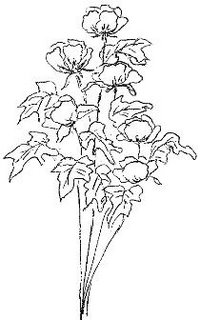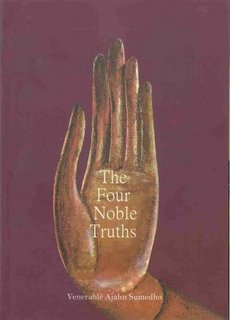
My wife is a devout Buddhist. Since she does not drive, I have been her personal chauffeur for all her Buddhist activities, be they attending Dharma talks, mantra chanting sessions, and Buddhist camps, both in town and out of town.
One perennial feature of any Buddhist center is the free distribution of Buddhist books, usually Chinese but sometimes English translation as well. They are known as, in literal English translation, items for fostering links, which also include other forms such as audio tapes, video tapes, bookmarks, and posters. The purpose is to disseminate the teachings of Buddha as widely as possible. They are free because the production cost is borne by generous donations by the adherents.
As time goes by, my wife’s collection of Buddhist books started to spill beyond a single book shelf, which led to the purchase of new book selves, the DIY kind which took me a while to assemble. It was during one of her reshelving exercises that she spotted several English texts and handed them to me, knowing that I’m kind of an avid reader.
 I started with The Four Noble Truths by Venerable Ajahn Sumedho (Amaravathi Publications, 1992). The Four Noble Truths comprised the first sermon that the Buddha gave to his five companions when he attained enlightenment at the age of 35. And they are:
I started with The Four Noble Truths by Venerable Ajahn Sumedho (Amaravathi Publications, 1992). The Four Noble Truths comprised the first sermon that the Buddha gave to his five companions when he attained enlightenment at the age of 35. And they are:- There is suffering;
- There is a cause or origin of suffering;
- There is an end of suffering; and
- There is a path out of suffering, the Eightfold Path whose elements are Right Understanding and Right Aspiration (under Wisdom), Right Speech, Right Action, and Right Livelihood (under Morality) and Right Effort, Right Mindfulness, and Right Concentration (under Concentration).
The book goes into detail on what each Noble Truth entails, and how they can be learned, understood, and applied to ordinary things in our daily lives. They are, hence, a lifetime’s reflection, and “require an ongoing attitude of vigilance” to use them as “the context for a lifetime of examination”. The key words to infuse these insights into our everyday life are “to reflect rather than to grasp”. One good way to achieve reflection is not to label everything in the first person such as “I’m suffering.” Instead, say “there is suffering” as is the way the first Noble Truth is stated.
So in that sense, it goes beyond “intellectual understanding”, which is merely knowing and able to regurgitate what each term means. Inherent in following the Eightfold path is trying things out, and thinking out of the box, to borrow a management buzzterm, the aim being to develop a mind that “moves around, watches, investigates, considers, wonders and reflects”.
Interspersed with personal anecdotes, the book is indeed easy to read, rendering the profound Buddha teachings enshrined in the Four Noble Truths that much easier to relate, and grasp (pardon the pun).
Venerable Ajahn Sumedho (Ajahn is the Thai word for “teacher”) admonishes us to be alert to the way things are in consonance with the essence of Buddhist practice that is very immediate to the here and now. In his words, “the present moment is what we can actually observe: we can't observe tomorrow yet, and we can only remember yesterday.”
I don’t profess to have understood fully what Venerable Ajahn Sumedho has managed to “simplify” for our sake at the first read. What with the fact that my mind has been conditioned to follow a linear track made up of sequential steps. But the more I read, muse, mull, and hopefully, ruminate, the more I’m thinking that they do make sense and are not complicated enough to be adopted as my life’s precepts toward attaining an affliction-free state of mind.
Read here for another good find of Buddhist books, as I continue my foray into the Buddhist realm of self enlightenment.

No comments:
Post a Comment